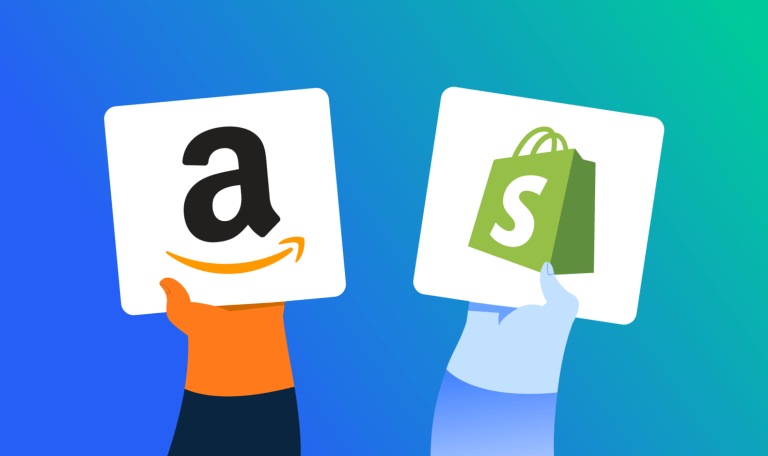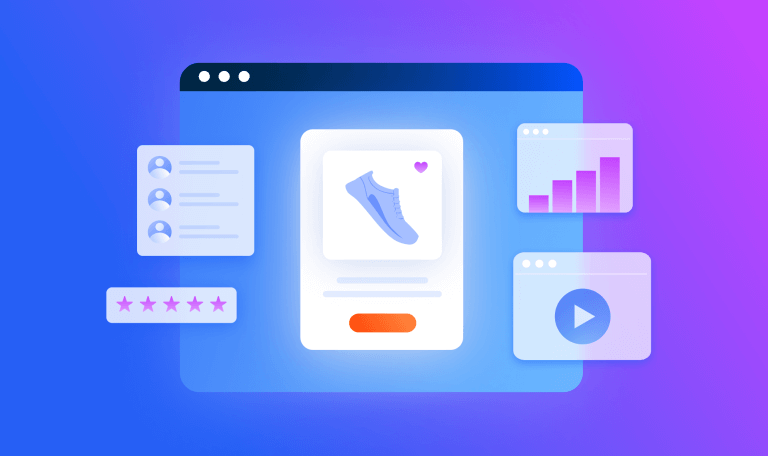How to Increase Sales on Amazon: 19 Strategies

Frustrated by “quick-fix” Amazon tips promising instant success but failing to deliver real lasting growth?
Well, you’re in the right place.
This guide is for brands and sellers who are serious about increasing sales on Amazon. We’re not going to sugarcoat it—succeeding on Amazon takes hard work. But do it right, and the payoff can be substantial.
You’re going to discover:
- Leveraging marketplace intelligence to go deep on competitor research – fast
- Getting the killer keywords that no one else knows about
- Implementing effective launch strategies to boost initial sales
- Optimizing your listings for higher visibility and conversion rates
- Leveraging Amazon’s powerful tools and programs for maximum efficiency
- Winning the all-important Buy Box
You’ll learn 19 proven strategies top sellers use to boost their Amazon sales – from the initial launch to setting up a brand store.
Ready to roll up your sleeves and get to work?
Then keep reading – we even have a bonus tip waiting for you further down!
1. It’s Amazon’s game, so play by its rules
OK, this might seem like a ‘duh!’ moment. But seriously, make sure you understand Amazon’s rules.
Whether you are a big brand or a small seller, maintaining a healthy account is essential if you want to succeed. Or shift products.
So familiarize yourself with Amazon’s policies. Map out the potential transgressions that can jeopardize your account.
This includes:
- Product listings – adhere to copy guidelines and make the page look good
- Customer interactions – get back to them quickly
- Review solicitation – no paying for one-line ‘this product is great!’-type reviews
Ensure that your account is in good standing. Don’t put in a ton of hard work and get kicked off the platform for something silly, like exaggerating your product.
Face it. Trashing your seller account for non-compliance will not lose Andy Jassy any sleep whatsoever.
👉Action Step: Take 10 minutes today to review Amazon’s latest seller guidelines and ensure your present (and future) product listings, customer interactions, and review practices are fully compliant.
2. Uncover hidden product opportunities with in-depth category research
Let’s say you’ve just been asked to research and launch a new range of dog toys for a new pet care brand.
To stay ahead of the competition, you need to go deep and analyze the category at a department level. That’s where the opportunities lie.
Shopper Intelligence is the perfect tool to show how to boost sales on Amazon.
It will allow you to:
- Identify gaps in the market where you can offer something unique or improved
- Monitor competitor pricing, revenue, and sales
- Enhance your own strategy by investigating competitor keyword strategies and marketing approaches
- Profile your target market and the average consumer
Do this, and you’ll be ahead of the majority of sellers.
Let’s drill down into the dog toys category 🐶. In the table below, we can see the top brands and their sales and revenue from the previous year.
Dogs clearly chew through a lot of plastic balls 🪀, fluffy bunnies 🐰 and rubber bones 🦴!
We can also dig deeper into performance by subcategory. Again, chew toys, squeaky toys, and balls are on the rise. Dog Toys is clearly a good market.
You can also find and analyze competitors in these categories. Study their product reviews and customer questions to understand their pain points. Or look at their keyword rankings to find opportunities they might be missing out on.
👉 Action Step: Use Shopper Intelligence to analyze a specific subcategory within your product line. Identify one or two gaps where your brand can offer a unique or improved product to capture market share.
3. Understand your target consumer
It’s easy to get too focused on your product and forget who you are selling to. Working out who your average customer is allows you to talk to them in their own language about their own problems.
And, as importantly, understand how much they are willing to pay.
Here, we opened up Shopper Intelligence’s Category Demographics tool and looked at who is buying dog toys.
There are some major points of interest here:
- Over 65% are college graduates 🧑🎓
- More than half earn over $50,000 a year 💰
- 75% are women 👵
- Nearly 65% are either in 1 or 2-person households 👫
On this basis, we can assume their pet is a very important part of their life. But, as most of them don’t have kids, they also have more disposable income. So they can spend it buying their dog some nice toys to chew from us.
👉 Action Step: Use Shopper Intelligence to uncover one niche opportunity in your product category and refine your keyword strategy based on competitor analysis. Go to The Platform →
4. Optimize your strategy with smart Amazon keyword research
Understanding what your customers are searching for starts with smart keyword research.
So, where do you begin?
A good place to start is the pain points your customers want to solve. These words not only form product research but also feed into the language you use on your product description.
Here are some standouts from a quick scan:
- ‘Indestructible dog toy’ – 660,000 searches (+220%)
- ‘Dog toy for small dogs’ – 367,000 searches (+14%)
- ‘Dog toys to keep them busy’ – 283,000 searches (+13,000%!) 😯
Focus on finding high-volume, low-competition keywords. Don’t forget to target long-tail keywords – three to four-word phrases that capture specific user search intent. These typically have lower search volumes and competition but can drive highly targeted traffic.
This is where Similarweb Shopper Intelligence shines. It can help you improve your organic Amazon rankings and outrun the competition.
You can go through to the top product – PetDroid Replacement Dog Ball Tennis Plush Cover(2 Pack) – and get all the keywords it’s ranking for. Something to be aware of: there are more product-specific searches on Amazon. A good example is ‘Petroid interactive dog ball’, which has a 66% share of clicks.
We can see that ‘interactive toys’ are also doing very well within the ‘squeaky toys’ sub-category. ‘Interactive dog ball’ is up 210% year-over-year (YoY), and interactive dog toys is getting 75,000 clicks.
👉 Action Step: Use Similarweb Shopper Intelligence to identify one high-volume, low-competition keyword in your category and refine your content strategy around it to boost organic rankings and capture targeted traffic. Go to The Platform →
5. On-page and list optimization for good Amazon SEO
We know Amazon’s pages convert extremely well (see below) compared to other retailer giants like Temu.com, Shein.com, Kohls.com, and Walmart.
Spend time – and dare we say it, money – optimizing product detail pages. They are your shop window, so make them look good.
The right-hand image below shows the relationship between clicks and position for Dog Toys. Like Google, things get easier if you’re higher up. But be aware you may need to pay to get into the top 3.
A quick glance at the left-hand graphic shows Christmas is clearly a time to sell.
Amazon Product Pages explained
Amazon product pages are worthy of a blog in itself. They are complex pages with plenty of places to optimize. Some are more important than others. Additionally, there are areas where other brands can advertise their own products.
- Display Banner – This is where you or competitor brands can run sponsored ads against you. There are other sponsored opportunities below the fold.
- Ratings & Reviews – You cannot directly affect this, but reviews and ratings are crucial to your Amazon page.
- Product Title—This is the most important part of the page from an Amazon SEO perspective. Make sure you include your keywords here and follow Amazon guidelines.
- Buy Box – Having your product in here is the equivalent of getting on page one of Google.
- Other Sellers – Many customers are unaware of this but you can click this section and see other sellers offering the same product.
- Bullets – Probably the second most important place for SEO. The recommendation is 5 bullets with a capitalized benefit at the beginning of each one.
- Images – Poorly presented products are a massive turn-off for buyers. Invest in professional photography and ensure your products are both visually appealing and informative. Use different shots for detail (these must have a white background) and in situ.
Think about copy.
Remember your keyword research in tactic 2. Try to integrate those terms into your headers and copy. A perfect example is the ‘Dog toys to keep them busy’ we found.
Use bullet points to highlight key features and benefits can make your listings more readable and persuasive, ultimately improving conversion rates.
This includes:
- Quality original images. Note the plural. Make sure they fit Amazon’s criteria.
- Informative titles. Include size, gender, and color if necessary. All of these things come up in search. Use your keywords.
- Go into Shopper Intelligence for high-performing keywords. Add them to the titles and bullets (see tip 2)
- Make the product descriptions short and compelling. Explain benefits, not just features
All of this takes work. But it’s crucial to why Amazon’s pages convert so well.
👉 Action Step: Review one of your product listings today. Update the images and optimize the copy with high-performing keywords using Similarweb Shopper Intelligence. Ask yourself if those bullet points and descriptions are informative and compelling. Go to The Platform →
6. Ignite your Amazon launch with a powerful strategy
You’re ready to start selling, but a successful product launch on Amazon is crucial for gaining the visibility and traction you need.
A well-planned launch strategy ensures your product achieves as many sales as possible on day one.
This initial sales boost helps your product rank higher in Amazon’s search results, increasing its visibility to potential customers.
Your strategy might include pre-launch marketing, promoting a launch day, and leveraging your network to generate critical initial reviews and sales.
A strong launch will make your product stand out right from the start.
👉 Action Step: Learn from successful launch examples and outline your launch timeline today, focusing on pre-launch marketing, promotion day activities, and generating reviews to create a strong foundation for long-term success.
7. Set an aggressive pricing strategy (at least to start)
While it’s a personal choice, a low initial pricing strategy can help you gain traction, generate sales, and climb higher in the listings.
Below we show how Shopper Intelligence can help you research products by price and units sold.
By setting break-even prices below your competitors’, you can overcome the initial lack of reviews, build sales momentum, and improve your product’s ranking on Amazon.
As your sales grow and positive reviews start rolling in, you can gradually raise your prices.
A low-pricing strategy can help establish your product in the market and create a foundation for sustainable profitability.
Check out what other brands are doing.
Similarweb offers cross-shopping analysis on competitor brands. Here we look at what other brands Kong’s customers are looking at.
Once you have some traction, you should look at the next step.
👉 Action Step: Compare competitor pricing and set a competitive break-even price to build early momentum and secure your place in the market.
8. Consider using a repricing tool to maximize sales and profit
Price is a crucial element in selling. But obviously, you don’t want to monitor your competitors’ prices continually manually.
Repricing tools keep you competitive without losing profitability.
Amazon offers a repricing tool called Automated Pricing. This tool is available within Amazon Seller Central and allows sellers to set rules for automatically adjusting the prices of their products based on specific criteria.
Here’s an overview of how that works:
- Rule-Based Pricing: Automatically adjust your prices based on competitor price changes or specific pricing goals
- Customization Options: Set minimum and maximum price limits to protect your margins
- Real-Time Adjustments: Make pricing changes in real-time to stay competitive in dynamic markets
- Buy Box Targeting: Configure your repricing tool to focus on winning the Buy Box, a key factor in increasing sales
👉 Action Step: Set up Amazon’s Automated Pricing tool today to stay competitive and optimize your pricing strategy for sales growth and profitability.
9. Put your brand on the Amazon Brand Registry
Are you a new brand? If so, consider registering your trademark and joining the Amazon Brand Registry.
Why?
The Brand Registry protects your products from unauthorized sellers and resellers trying to list under your brand.
Competition from resellers is a constant threat to brands selling on Amazon.
The graphic below shows the sales performance for Kong. Here, you can see that 3P sellers are dominating its market.
Amazon Brand Registry also gives you access to powerful tools for managing your product titles, descriptions, images, and other brand content easily.
Plus, with the ‘A+ Content‘ feature, you can enhance your listings with longer descriptions, additional images, videos, and formatted text, helping your products stand out even more.
👉 Action Step: Begin the registration process with Amazon Brand Registry today to protect your brand and unlock tools that enhance your listings.
10. Scale with Fulfillment by Amazon (FBA)
Fulfillment by Amazon (FBA) is ideal for small sellers. With FBA, Amazon takes care of the logistics—storing, packing, and shipping your products—delivering a smoother, more reliable customer experience.
FBA can help you scale your business and build customer trust.
You can also make your products eligible for Prime shipping and more appealing to Amazon Prime members.
11. Use Amazon Advertising to outpace your competitors
Driving traffic to boost early sales should be a cornerstone of your strategy. Amazon paid search ads are a powerful tool to gain an edge over your rivals.
How important is paid advertising on Amazon? Here’s a quick analysis of Petdroid’s marketing on Shopper Intelligence:
In this case, 12% of clicks to its page are via paid ads.
Amazon Ads are massive. For a deeper dive into Retail Media Networks (RMNs) and how to leverage them effectively, check out our blog, Retail Media Demystified – Your Guide to Ecommerce Success (Pro Tip: Learn how to use Shopper Intelligence to uncover hidden keyword opportunities).
Here are some quick tips to get started with Amazon PPC:
- Start small: Begin with a modest budget to gather data on keyword performance and conversion rates
- Focus on optimization: Prioritize keywords with low ACOS (Advertising Cost of Sale) and high conversion rates to maximize your ad spend
- Increase visibility: Use bid placements to rank higher for effective keywords and boost your ad’s visibility
A word of caution: Success with retail media networks requires expertise. It’s about driving sales, not just clicks.
👉 Action Step: Familiarize yourself with the Amazon Ads platform and find some keywords using Shopper Intelligence. Familiarize yourself with cost, the tracking tools, and reach. Go to The Platform →
12. Master inventory planning to keep sales flowing
Selling out of your inventory might seem like a good problem to have – until you realize that stockouts do more than stop sales. They can seriously hurt your Amazon rankings.
That’s why careful inventory planning is crucial, especially during those critical early days.
What’s the key?
Effective inventory planning helps you maintain sales momentum and avoid the pitfalls of running out of stock.
Amazon Seller University recommends keeping more than 2 months of inventory on hand, particularly during the initial launch phase. This buffer helps you meet increased demand without the risk of stockouts.
👉 Action Step: Review your current inventory levels and forecast demand for the next six months. Ensure you have enough stock to cover potential surges in sales and avoid stockouts that could impact your rankings.
13. Monitor your Amazon Account Health Rating
Remember that bit about Amazon’s rules (tip 1)?
Well, keep a close watch on your Account Health Rating. If there’s one thing Amazon cares about more than anything else, it is the customer.
The Amazon Account Health Rating (AHR) is a reflection of how well your brand looks after customers. It reflects both negative and positive factors.
Maintaining a good AHR is essential for building customer trust and ensuring your account’s longevity.
It can also help with the next strategy…
👉 Action Step: Regularly review your Amazon Account Health Rating and identify any areas for improvement. Focus on customer satisfaction, compliance, and shipping performance to maintain a strong AHR and build lasting customer trust.
14. Winning and keeping the Amazon Buy Box
Here’s where things get interesting.
If you’re selling on Amazon—especially if you’re competing with other brands selling the same product—you need to understand the Buy Box.
What is it?
When you click “Add to Cart” or “Buy Now,” you’re purchasing from one specific seller. Even if multiple sellers offer the same product.
Amazon decided what one you’re buying from. That seller is the current Buy Box winner.
But here’s the catch: the Buy Box winner isn’t fixed. Like the number one ranking on Google, it could change at any time.
Revisit the same listing a day later. You might end up buying from a different seller who owns the Buy Box position. Amazon uses an algorithm to determine what seller gets the Buy Box.
Here are some key factors that influence the Buy Box algorithm:
- Competitive pricing: Keep your prices in line with—or better than—other sellers
- Inventory management: Ensure you’re well-stocked to avoid losing the Buy Box due to availability issues
- Fulfillment by Amazon (FBA): Using Amazon’s fulfillment services can boost your chances of winning the Buy Box
- Seller ratings: Maintain high seller ratings, quick response times, and top-notch customer service
- Professional Seller account: You need to have a Professional Amazon Seller account to be eligible for the Buy Box
- Customer service: Excellent customer service can give you an edge in securing the Buy Box
- Star rating: Aim for at least a 4.3-star rating to increase conversion rates and improve your chances of winning the Buy Box
👉 Action Step: Review your pricing, inventory, and seller performance today to ensure you optimize for the Buy Box. Start by checking your current star rating and response times.
Read for more tips: How to Win the Amazon Buy Box.
15. Set up your Amazon store and create your own brand experience
Ready to take full control of how your brand shows up on Amazon?
Setting up an Amazon Store isn’t just about creating a microsite – it’s about owning your brand experience.
With an Amazon Store, you can:
- Design your own brand space:
- Showcase your products in a custom layout that reflects your brand’s personality
- Add rich media content, like videos that capture your products in action, and curated collections that make it easy for customers to explore your full range
- Increase customer engagement:
- A visually appealing, well-organized store can build brand trust and repeat customers
- Every interaction in your store is an opportunity to build loyalty
- Boost your sales:
- The more engaging and seamless the shopping experience, the more likely customers are to add products to their carts
- A cohesive brand experience will help you stand out from the crowd
👉 Action Step: Ready to make your brand unforgettable on Amazon? Start building your Amazon Store today and transform how customers experience your brand.
16. Leveraging external traffic and social media for more sales
Everything we’ve covered so far has focused on the Amazon platform. But your sales potential doesn’t stop there.
Drive external traffic to your listings and Amazon will reward you with a ranking boost.
That’s right. Bringing in traffic from outside the Amazon platform is a ranking factor inside of it.
Again, let’s look at Kong’s traffic on Shopper Intelligence.
Here, we can see that 8% of its Amazon traffic comes from search engines.
So do this:
- Engage influencers on platforms like Instagram, YouTube, and TikTok to promote your products
- Use paid ads on social media platforms like Pinterest, TikTok, Twitter, and YouTube, as well as Google Shopping ads, to direct more traffic to your listings
By combining both organic and paid traffic sources, you can reach a broader audience and increase your chances of turning them into customers.
With Similarweb, you can also connect with authority site owners in your niche. Offer them free products in exchange for a review (just be sure to stay within the guidelines).
Collaborating with influencers with a strong following in your niche allows you to tap into their audience and build credibility through their endorsement.
👉 Action Step: Start by identifying 3-5 influencers or authority site owners in your niche today. Reach out with an offer of your product in exchange for a review or promotion.
17. Building a social media presence
Set up brand social media accounts. Build brand awareness and drive traffic to your Amazon listings by creating engaging short-form videos, product images, and tips and using Amazon posts.
Leveraging social commerce platforms like Instagram and TikTok can significantly enhance your product’s reach and sales potential.
Use these accounts to engage directly with potential customers through creative content and influencer collaborations.
👉 Action Step: It’s time to drive some traffic to your Amazon listings. Create a content calendar for Instagram and TikTok. Plan out a series of short-form videos and posts that highlight your products. Look at ways to comment on posts and engage your audience.
18. Build your own site to boost Amazon sales
If you’re Adidas, building your own site is a no-brainer. But many smaller brands avoid it, preferring to focus solely on selling through Amazon.
That’s a mistake.
Creating a separate direct-to-consumer (D2C) website that educates consumers about your product niche can drive significant traffic to your Amazon listings. Again, Amazon’s algorithm will give you a boost if you drive external traffic to your product page.
You’ll also establish your brand as an authority in your niche, attracting potential customers who are more likely to convert.
Producing informative and engaging content. If it’s relevant to your customers and links directly back to your Amazon product pages, you will sell more products.
👉 Action Step: Create a simple landing page or blog highlighting your expertise and linking directly to your Amazon listings. This will build credibility and drive more traffic to your Amazon store.
19. Expanding your business into new Amazon marketplaces
This can significantly increase your Amazon sales. Do your market research and localize your listings to cater to different regions’ preferences and SEO keywords.
By entering international markets, you can reach a broader audience and diversify your revenue streams.
Again, this is where Similarweb’s Market Research add-on can help identify other markets.
Remember, that expansion means adapting your shipping operations and customer service to meet local demands—but it can result in substantial growth and greater brand recognition globally.
👉 Action Step: Begin by researching one new international marketplace. Focus on localizing your product listings and preparing your operations to meet regional demands.
As promised, one last tip for free…
Selling on Amazon is about rolling up your sleeves and putting in the work.
But guess what?
By following these 19 battle-tested strategies, you’re already miles ahead of those who think they can strike gold by listing a couple of items and manifesting a Lamborghini.
It’s more like a marathon 🏃, or at least 1,500 meters on the track. Apply plenty of sweat but strategy too.
The last tip is to enjoy it – nothing beats getting sales. Sure, it’s hard work. But once you’re up and running it’s a case of tweaking and refining. Amazon is a fantastic platform for conversions where a brand can get started relatively quickly without a Google-style sandbox. It’s here that tools like Shopper Intelligence and our Amazon Seller Tool can make things just that little bit easier.
You can boost Amazon sales with unmatched data granularity across:
- Category and brand sales performance
- Traffic sources and competitor marketing strategies
- Shopper behavior and demographics
So, like we said, analyze what works, ditch what doesn’t, try new things, and steal ideas and keywords from competitors. Most importantly, keep laughing and learning throughout the process.
And you’ll get there.
The ultimate edge in retail insight
Put the full picture at your fingertips to drive product views and sales


























